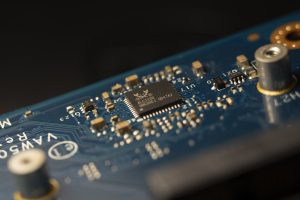Biomimicry in Automotive Design: Learning from Nature
In today’s fast-paced world, innovation and efficiency have become key factors in the automotive industry. Designers constantly seek to push boundaries and create groundbreaking designs that not only look aesthetically pleasing but also perform at their best. However, what if we told you that nature has been the ultimate design innovator for centuries, and we can learn a thing or two from it? This is where biomimicry comes in – the concept of looking to nature for inspiration in design and engineering. In this article, we will delve into the fascinating world of biomimicry in automotive design and how it is revolutionizing the industry.
What is Biomimicry?
Biomimicry, also known as biomimetics, is the practice of imitating nature’s processes, patterns, and designs to solve human problems. It is an interdisciplinary field that draws inspiration from biology, chemistry, physics, and engineering to create sustainable and innovative solutions. The term originated from the Greek words bios, meaning life, and mimesis, meaning to mimic.
Biomimicry in Automotive Design
The automotive industry has been using biomimicry as a source of inspiration for years. After all, nature has perfected its designs through millions of years of evolution, making it a reliable source for efficient and sustainable designs. Let’s take a look at how biomimicry is being incorporated into automotive design.
Body Design
The first thing that comes to mind when we think of a car is its body design. The aerodynamics and sleek curves are not just for aesthetic purposes; they serve a functional purpose as well. Automakers have been turning to nature’s designs to improve a car’s aerodynamics. For instance, the Boxfish, a small fish found in tropical waters, has a unique hexagonal design that reduces drag and increases energy efficiency. This design has been incorporated into the body of the Mercedes-Benz Bionic car, leading to a significant reduction in fuel consumption.
Traction and Adhesion
Nature has also served as a source of inspiration for improving a car’s traction and adhesion. The feet of geckos have tiny hairs that allow them to stick to surfaces, even when upside down. This concept has been used in tire design, creating a surface that can grip the road even in wet conditions.
Energy Efficiency
The automotive industry is constantly seeking ways to produce energy-efficient cars. Nature has a lot to offer in this regard. The shape of a whale’s fins inspired the design of the Tubercle Technology used in wind turbines, cars, and planes. This design reduces drag and increases efficiency, thus reducing the overall energy requirement.
Noise Reduction
Engineers are always looking for ways to reduce the noise produced by car engines. Owls are known for their silent flight, and their feathers have inspired the development of a new type of acoustic material used to reduce engine noise. This material absorbs sound and can reduce engine noise by up to 10 decibels.
Smart Materials
Self-healing and self-cleaning materials inspired by lotus leaves and shark skin have also been incorporated into automotive design. These smart materials can repair scratches and repel dirt, reducing maintenance and increasing durability.
The Future of Biomimicry in Automotive Design
The potential of biomimicry in automotive design is vast and ever-evolving. With the advancements in technology, there is no limit to what can be achieved. Some automakers have even started using 3D printing technology to replicate natural designs more accurately. Moreover, as the demand for sustainable and eco-friendly solutions increases, biomimicry will continue to play a crucial role in designing the cars of the future.
In Conclusion
Biomimicry has been instrumental in revolutionizing the automotive industry, leading to more sustainable and efficient designs. By looking to the natural world for inspiration, engineers have been able to push boundaries and create innovative solutions. With the continuous evolution of technology, we can only imagine what the future holds for biomimicry in automotive design.







